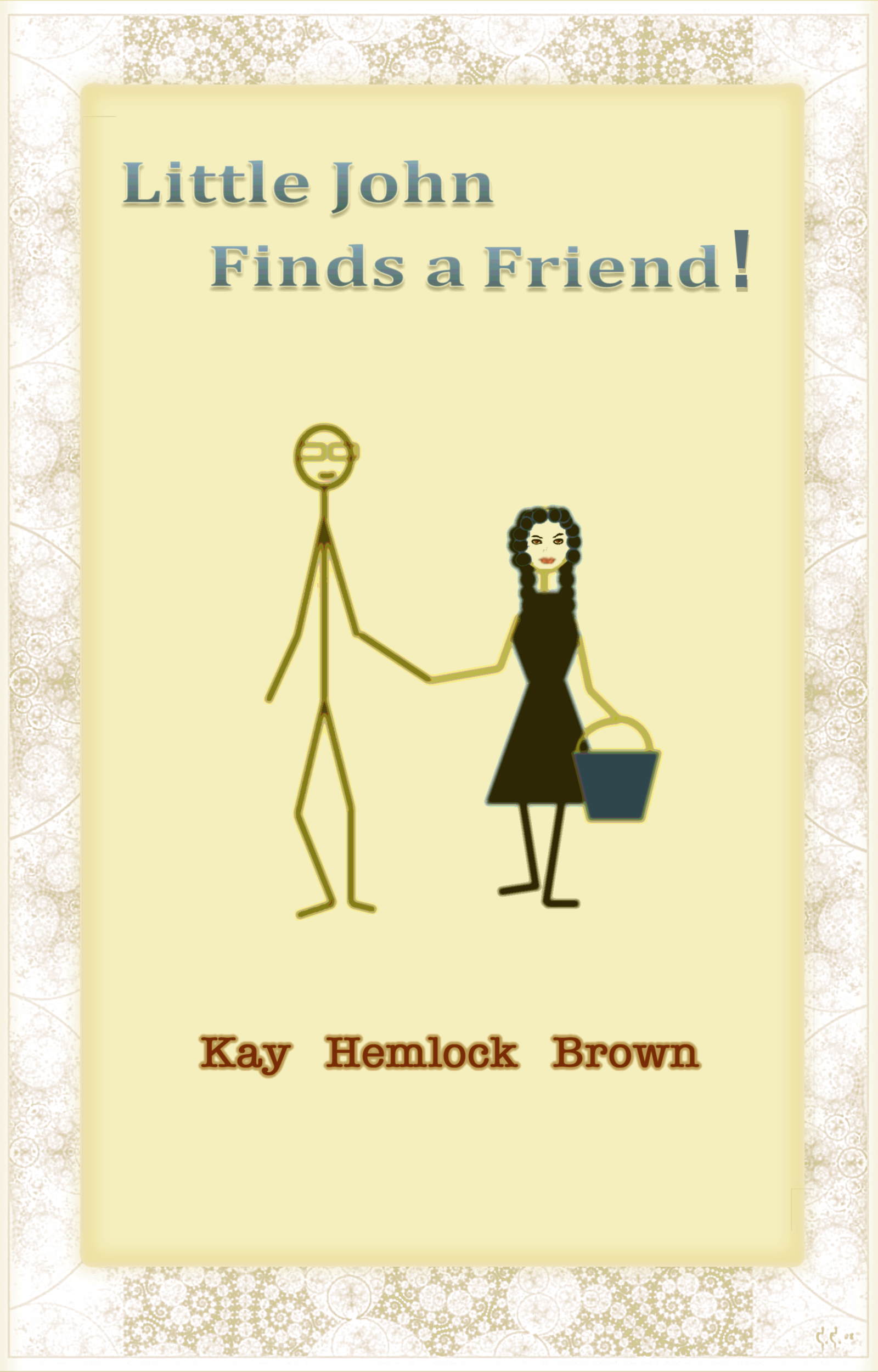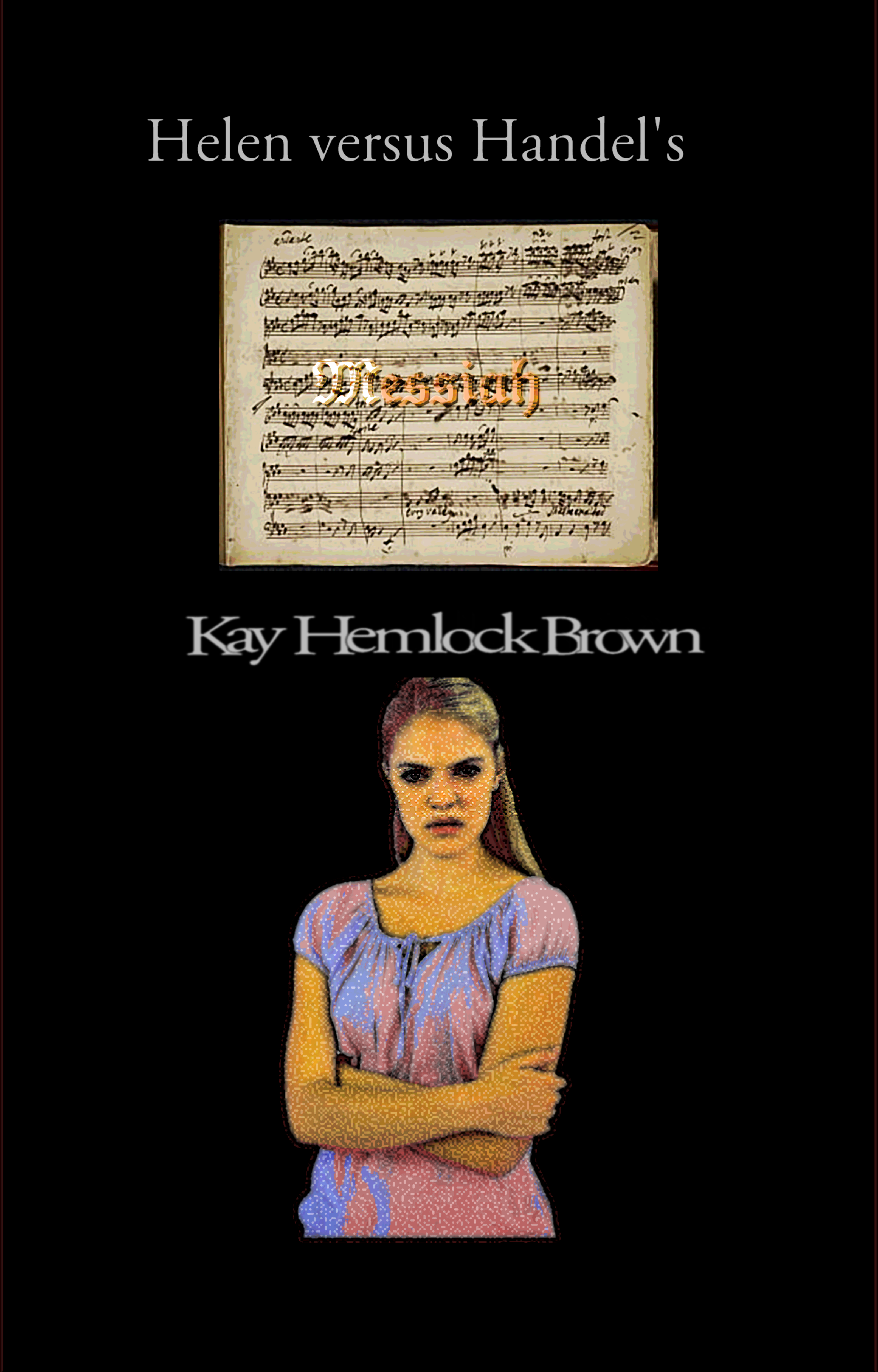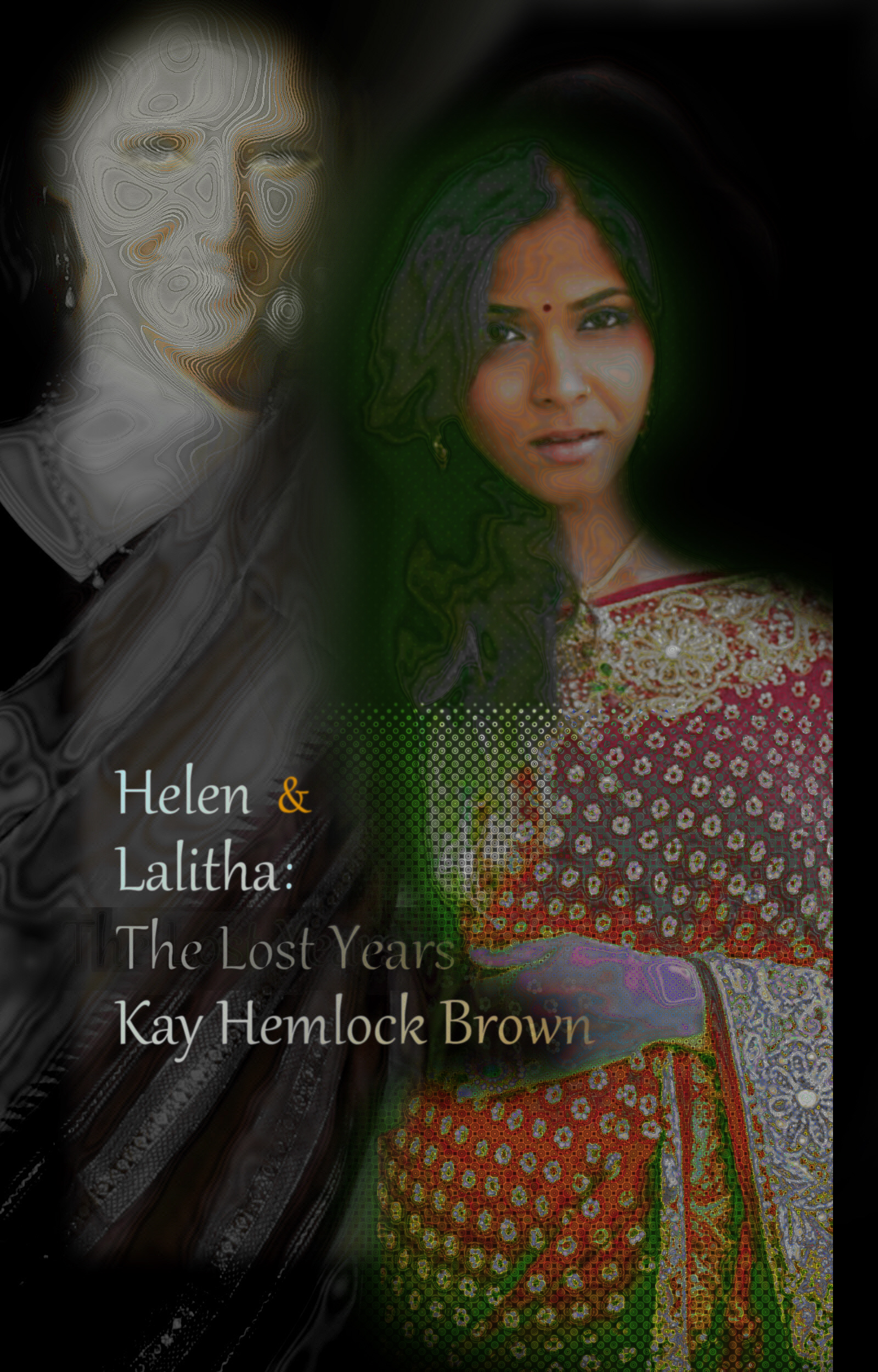As you know, making interesting covers for the books I have published on
Smashwords is one of my pastimes. I get just about as much fun out of making these covers as I got from writing the books!
The first one, and one of the least successful, was the cover for
Sweet Hurricane, which was a rather pitiful attempt. It was a complicated story, so I had to have a cover that was relevant. If I get a better idea for one, this one will be dropped like a hot potato.
The cover features too many elements, from the general store motif (because our heroine Helen works at a sort of general store at the beach), to the dance motif (Helen meets and falls in love with a brother and sister pair, and they're dancers. But the pair shown here doesn't represent what they look like in my imagination, or even in their description), to the kids on bikes motif, and the hurricane motif. Worst of all is the title; if I had to do it all over again, I'd pick a different title. Probably less adventuresome: "
Helen and co. at the Shore: Hattie".
OK, well, I did go ahead and changed this cover. Here's the new one.
The very next book I published was the amazingly successful
Jane, with one of the best covers I managed to make, sultry and simple and sexy and colorful.
Jane is free, and has been downloaded more than 1,300 times, but I don't know whether it is because of the cover, or whether because it is free. It contains some very attractive characters, but I'm not sure whether they connected with
anybody.
The lesbian theme is front and center, both on the cover and in the introduction, and I wonder whether readers who like lesbian fiction are the only ones who download the books. (I suppose that's an obvious "yes", because
all the books are on lesbian themes...)
This is the book most heavily procured on the
Smashwords site, written by me, but it is offered free. There is a prequel:
Jane, the Early Years, see below.
[I changed the cover a little. You will recognize the image that is on the sidebar of this blog.]
The next book --I'm trying to list these in chronological order, but it is just a little too difficult--was
Little John Finds a Friend. This is a story about the kid brother of Helen, a character about whom I wrote an enormous book, which I'm publishing in parts. (Sweet Hurricane is a --rather important, actually-- episode from the Helen saga.)
Little John is an interesting character, and in
Finds a Friend, his relationship with his college friend Taylor becomes more intense. The story is lighthearted, and actually not a lesbian themed one, despite what I wrote a few paragraphs above. I like Little John a lot, and I like Taylor even more, and this story is a lot of fun.
In keeping with the tone of the story, the cover was a doodle with stick figures. John is a tall, lanky fellow, and Taylor is a goth chick. I did the best I could.
Helen versus Handel's Messiah was a sort of Christmas Special, but I keep it up all the time, because it is too much trouble to archive and unarchive.
Despite it's flippant title, it is a serious, slightly sentimental meditation on the reversals in Helen's life, especially the several years since she began to teach at Westfield College, a fictitious institution in Pennsylvania. The model featured on the cover doesn't really reflect my image of Helen, but her expression was sort of interesting. The score on the cover is an actual page from the manuscript score.
Alexandra was a major project, not in the sense of how serious the material is (the tone is pretty serious, for the most part), but because of how long it was, and how much effort it took. I plan to rewrite the first fifty or so pages one of these days, but it stands at more than a thousand pages long at the moment. The cover was a depiction of Alexandra and Genevieve, the royal couple who are the central love story of the book. It isn't really a gothic romance, as the cover and the summary might lead you to believe. It is a romance, an anti-war novel, a science-fiction fantasy (but no dragons), and in a perverse way a sort of social commentary. I don't think it succeeds at every level, but do want people to buy it and read it, but I don't want to give it away. I guess the thing to do is to give away coupons for it, and one of these days I'll put them here, below.
A
Smashwords staffer was unhappy with the depiction of nudity on the cover. I'm crazy about nudity, and I think we should have nudity everywhere we could possibly have it, but I am unhappy with the suggestion that there is a lot of sex in the story. There is a little, but sex is by no means a central theme. Well, not very central.
Helen and the Flowershop Girl was a short episode from the Helen saga that I packaged and published last Spring. I had a different cover for the first publication, until I came up with this one. Helen is a tall, long-haired blonde, and the Flowershop Girl is a short, chunky girl, who wears shorts. As you can see, I had trouble getting images that were appropriate, so the girl in shorts is a rather svelte young woman, while the girl in the dress is a brunette, and not particularly tall. So what to do?
Neither girl is at all how I imagine the characters to be, except that the girl in the dress has that innocent look that seems part of Helen's personality, and her hair is very much as I imagine Helen's hair, except for being the wrong color. I do imagine Helen wearing a dress on those lines, and the dress was definitely added from a fashion catalog, and I hope I don't get into trouble for it.
Prisoner! is a story set in the Bronze Age in an alternate Earth. The original cover was based on a classical painting of a slave market, with clothes overlaid on (very clumsily).
The main character,
Maia, is a war captive, so the image does not really fit the story. Still, I imagine Maia's build and features to be roughly the same as those of this poor girl. I love the colors, and they fit the mood of the story very well.
There are twin princesses in the story, and I wish I could feature a cover with them in it somewhere; maybe a summer project for next year.
There is also a character of a dark-skinned girl, with every inch of her body tattooed; that would be a fun search.
I grew dissatisfied with this cover (though the book had done very well with it), and eventually settled on this one. The build of this girl is rather 20th Century; bronze age women, even the tallest ones, were not as firm-fleshed as she! I struggle with trying to be authentic in terms of dress and other details, with trying to convey the essence of the character in terms of how she might look if she were to be a modern girl. This is obviously a quest that can never be satisfied.
Helen at Ballet Camp is the first book in the Helen series. (There will probably be a prequel, which summarizes what went on before Ballet Camp, during Helen's freshman, sophomore and Junior years.) Ballet Camp is a rather innocent teen novel, but that's how I had written Helen's character at that stage of her development, and the writing is as immature as Helen's character. But it relates a part of Helen's story, as it happens, an inessential part.
If it isn't obvious, Helen had ballet training under a (fictitious) famous choreographer and dancer, Andrew White, no relation. This establishes the background for a couple of stories in which Helen dances, later on.
Music of the Stars. This work was a major project, which I doubted I could finish. However, I recklessly published it in advance in August of 2014, and promised to have a completion in one year.
If I hadn't done that, I never would have completed it, so I'm happy. Unfortunately, the completion shows signs of being written very fast, and I'm determined to rewrite it. I won't change the story substantially, but I suppose it's inevitable that it's going to be a little different. Mostly, because I'm so involved with so many of the characters in that story (talk about killing off your darlings) I can't bear to commit to particular endings. Most of all, I'm depressed at being unable to fill out the character of Athene, Helen's daughter (in this story).
While we're on the topic, when I first started writing this work, some half a dozen years ago (I can't remember), I had almost decided to scrap the original Helen saga. That was so dripping with sex and depravity that I thought it would have to remain just an indulgence of mine. Since then, I have seen far more depraved things with no saving features whatsoever in print and online, and Helen came off looking practically like a nun. So I'm cleaning up the Helen saga in little bits. But
Music of the Stars was an attempt to salvage the interesting character of Helen, and make
something out of her. To my horror, when I looked back at the original Helen story, it was obvious that the two characters could not be the same, because their histories diverge at about the age of 30. So anyone who reads this book has to think: Oh, this is the Voyager Helen, and not the Saga Helen.
It is a very long work, close to 650 pages, and serious in tone. As with all my writing, despite the mature themes, there are lots of juvenile characters, some of whom grow into roles that have sexual themes interwoven in them. The cover is very generic, and I want to create a different one when I can.
[Added later: This is a new cover; I have gammaed it up (don't bother to find out what that is: it just makes it less dark) for the blog post. It shows a girl swimming up through the center of the Andromeda Galaxy, which is, of course, impossible.]
Helen, The Lost Years: Lalitha. This is a reference to an Indian girl (she starts out being about 17 in beginning of this story, and by its end, about 35. Helen actually marries this girl in a civil ceremony; she is crazy about her. But, while they're living together, Helen begins having affairs with a couple of other people, and Lalitha can't take it anymore, and they split up. But Lalitha continues to be a significant presence in the Helen stories, and I subconsciously wanted them to get together eventually. But they never do.
The Indian girl in my imagination is very close to the model in this photograph, but I did not have a good photograph of her in the collection. And, to my amazement, the Western girl in the picture
does come very close indeed to my mental image of Helen. (Of course, what's important is that it doesn't clash with the mental image the
reader has.) But the cover is kinda crappy, and I have to work on it.
Jane, the Early Years. This story was written shortly before 9/11, and was intended to be both very erotic, and very serious. After some years, I felt the eroticism was a little too much, and I had to work hard to partially sterilize it. It has some serious themes, such as HIV and terrorism, not to mention Xenophobia. Those themes are explored in
Jane, but they're also present in this book, of which
Jane is a continuation.
I think this cover might be, along with the cover of Jane, one of my best, and I'm certainly not going to touch it! I hope you love it as much as I do.
Volumes in Preparation:
Jana
This one was written completely, but not typed into the computer, so now I have to look for the sheets of manuscript, and my filing habits are worse than useless. Don't tell
Smashwords, but this story was partly serialized on this very blog:
see the archives. The graphic of a girl wearing a
chiton that is on the sidebar was an illustration for
Jana. It's a modification of that graphic that I'm presently using as a cover.
Kay


































